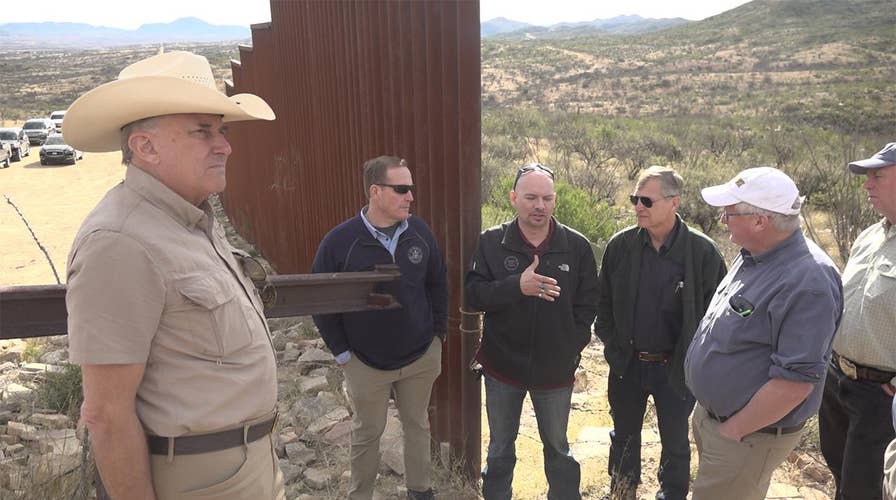Ranchers, agents share border security concerns.
Ranchers, Border Patrol agents at center of funding a wall debate as congressmen visit border.
Last Monday evening, eight U.S. congressmen and I stood on a bluff overlooking the Mariposa Port of Entry in Nogales, Arizona, at the southern border with Mexico. We were wrapping up a two-day tour of the border by getting a bird's-eye view of the thousands of cars and tractor-trailers carrying freight that enter America every day through this busy port.
It was a chance to see multiple elements of an effective border security plan – walls, roads and infrastructure, cameras and sensors -- and most importantly, highly trained and professional Border Patrol agents.
While we stood there, the cameras and sensors detected a man pushing concertina wire away from the slatted fence, so he could climb the barrier and slide down on the American side. He then raced into the brush at the bottom of the bluff on which we were standing. Shortly after, he hid. Two Border Patrol trucks raced up and agents rushed out. They found his hiding place and took him into custody.
REP. ANDY BIGGS: PRESIDENT TRUMP HAS ONLY ONE OPTION LEFT -- DECLARE AN EMERGENCY AT THE BORDER
In this case, a single illegal immigrant was apprehended because all the elements of border security were present. But what about the thousands of acres and miles where there is no wall to slow illegal crossings? What about the ravines and valleys that do not have camera or sensor coverage? And, most importantly, even if there is technology assisting in detection and surveillance, how do we capture illegal immigrants when our Border Patrol doesn’t have roads to drive on, radios for communication, and must patrol thousands of square miles with only a handful of agents?
House Speaker Nancy Pelosi, D-Calif., insists that building a border wall is “immoral.” I wonder when she last visited the border, spoke with agents, or conversed with families who live and work along it. Has she seen and heard the stories of the victims of the criminal violence that comes across the border, or counted the tens of thousands of people who have been harmed by the scourge of illegal drug and human trafficking?
Tons of drugs have been seized at ports of entry and even between the ports, and no one knows how many more tons are not interdicted. Approximately 40 percent of the drugs seized on our borders come through the Tucson sector. Again, that’s just what we catch.
We don’t know what we don’t know. That’s what’s important in this debate. What we know is devastating enough.
Death and addiction costs related to illegal drugs are backbreaking to this country. We have victims of crimes committed by illegal immigrants. The frontier is rugged and exacts a physical toll, resulting in the deaths of many trying to enter the country illegally. Drug and human smugglers commit crimes against their human cargo with impunity, creating a humanitarian crisis. Environmentalists should be concerned by the ecological damage being inflicted by border crossers. Economic damage includes suppression of wages and technological innovation resulting from cheap labor.
We simply do not know the full extent of all of the problems caused and exacerbated by illegal immigrants, regardless of whether their motive to enter is malevolent or benign.
What we can be certain of is that as long as there are incentives to enter and stay illegally in this country, people will continue to flood our borders.
CLICK HERE TO GET THE FOX NEWS APP
When my congressional colleagues and I stood on the bluff overlooking the Mariposa Port of Entry, and witnessed the apprehension of the illegal immigrant, we saw what a fully funded and functioning border security strategy might look like. The foundational element is to slow down illegal entrants. You do that by building a wall.
As Mary Ann Mendoza, an Angel mother whose son was killed by an illegal immigrant, said, “A wall won’t stop everyone, but no wall won’t stop anyone.”





















